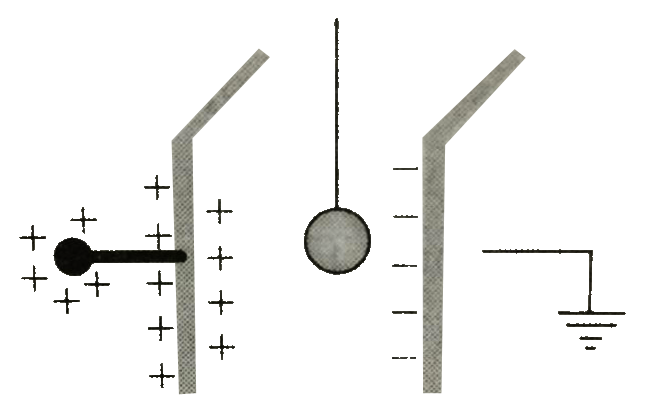The annular and spirally thickened conducting elements generally develop in the protoxylem when the root or stem is
maturing
elongating
widening
deifferentiating
The correct Answer is:C
Vessels or tracheae are made up of a row of cells, placed one above the other, with their intervening walls absent or variously pored. The walls of vessels are lignified and hard, but not very thick. The cell cavity or the lumen is wide. The thickning may be annular, spiral, sclariform, recticulate and pitted.
Topper's Solved these Questions
- BOOK - ARIHANT NEETCHAPTER - ANATOMY OF FLOWERING PLANTS EXERCISE - Chapter exercises ( Medical entrances special format questions Assertion and reason)8videos
ANATOMY OF FLOWERING PLANTS
- BOOK - ARIHANT NEETCHAPTER - ADOLESCENCE AND DRUG/ALCOHOL ABUSEEXERCISE - MEDICAL ENTRANCES GALLARY (COLLECTION OF QUESTIONS ASKED IN NEET & VORIOUS MEDICAL ENTRANCE EXAMS)23videos
ADOLESCENCE AND DRUG/ALCOHOL ABUSE
- BOOK - ARIHANT NEETCHAPTER - ANIMAL HUSBANDRYEXERCISE - CHAPTER EXERCISES (Medical entrances gallery) Collection of questions asked in NEET & Various Entrance Exams18videos
ANIMAL HUSBANDRY
Similar Questions
A conducting wire of length l, lying normal to a magnetic field B, moves with a velocity v as shown in (a) Find the average magnetic fore on a free electron of the wire. Due to this magnetic force, electrons concentrate at one end resulting in an electric field inside the wire. The redistribution stops when the electric force on the free electrons balances themagnetic force. Find the electric field developed inside the wire when the redistribution field developed inside the wire when the redistribution stops. (c) what potential difference is developed between the ends of the wire?
 View Solution
View SolutionThe thermal powered density u is generated uniformly inside a uniform sphere of radius R and thermal conductivity Find the temperature distribution in the sphere when the steady state temperature at the surface is T0.
View Solution
Knowledge Check
- Question 1 - Select One
Read the following statements
(i) Collenchyma contains lignin in its wall thickenings.
(ii) Collenchyma occurs in only aerial parimary parts and s absent from the roots.
(iii) Trichomes are multicellular epidermal outgrowths, which also contain some inner tissues.
(iv) Xylem fibres often occur in metaxylem while they are absent or rare in protoxylem.
which of these are correct?A(i), (ii) and (iii)B(i), (ii) and (iv)C(i) and (iii)D(ii) and (iv) - Question 2 - Select One
Assertion : A correct concentration of auxin and cytokinin is required for the development of root and shoot in callus.
Reason: When the ratio of kinetin to auxin is high only shoot develop but when the ratio is low only roots developAif both are true with reason being correct explanationBboth true but reason in not correct explantionCassertion true but reason is wrongDboth are wrong - Question 3 - Select One
Assertion : A correct concentration of auxin and cytokinin is required for the development of root and shoot in callus.
Reason: When the ratio of kinetin to auxin is high only shoot develop but when the ratio is low only roots developAIf both A and R are true and R is the correct explanation of ABIf both A and R are true but R is not the correct explanation of ACIf A is true and R is falseDIf both A and R are false
A table tennis ball covered with a conducting paint is suspended by a silk thread so that it hangs between tow metal plates. One plate is earthed, when the other plate is connected to a high voltage generator, what will happen to the ball.
 View Solution
View SolutionFigure shows to concentric conducting spherical shells, each initialy carrying a charge Q. The amount of heat generated in the system when the two shells are joined by a conducting wire by closing the switch S is (Q/n)2πε0a where n is an integer. Calculate the value of n
 View Solution
View SolutionWater and dissolved minerals get into the root hair of a plant by a process called A and enter the conducting tissue B. The C helps the water and dissolved minerals to move up through the tissue B in roots and stem, and reach the leaves of a plant. In the leaves food is made by a process D. This food is then transported to all the parts of a plant through tissue E. The process of distributing food made in the leaves to all the parts of the plant is called F.
(a) What are (i) A (ii) B (iii) C (iv) E, and (iv) F ?
(b) Which tissue is made up of living cells : B or E ?
(c) Name one substance (other than oxygen) which is transported by tissue A in the human body.
(d) Which two components of tissue A are the cells without nucleus ?
(e) Name any two organisms (animals) which do not have liquid like A in their body.View SolutionAn element X combines with oxygen to form an oxide XO. This oxide is electrically conducting.
(a) How many electrons would be there in the outermost shell of the element X?
(b) To which group of the periodic table does the element X belong?
(c) Write the formula of the compound formed when X reacts with chlorine.View SolutionIn a Van De Graff generator , when a positively charged spherical conductor placed at the center of a spherical conducting shell is connected by a wire to the shell , all the charge flow to the conducting shell. What will happen if the inner conducting sphere has a negative charge ?
View Solution

